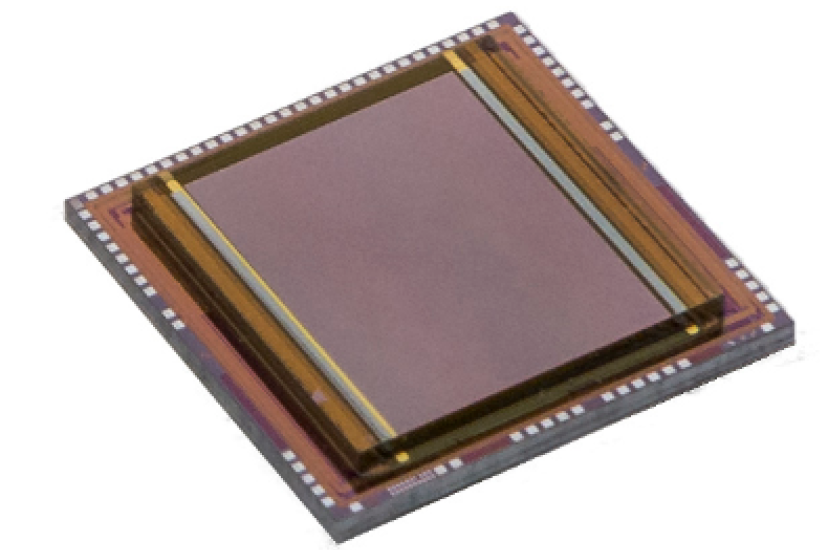The latest hyperspectral imaging products for 2025

Hyperspectral imaging is used in applications as varied as agriculture, pharmaceuticals and even earth observation (Credit: Seenax/Shutterstock.com)
A look at the market for hyperspectral imaging and some of the cameras, sensors and other optical products available
Originally developed in the 1980s for remote sensing applications, hyperspectral imaging is used in applications as varied as agriculture, earth observation and pharmaceuticals today.
What is hyperspectral imaging?
Hyperspectral imaging is an advanced imaging technique that is designed to capture and process information from across the electromagnetic spectrum. Unlike standard photography, which records images in three colour bands (red, green, and blue), hyperspectral imaging collects data across dozens to hundreds of narrow spectral bands. Each band can capture light at a specific wavelength, to provide a detailed spectral signature for every pixel in an image.

SCD DETECTORS FOR HSI (Hyperspectral Imaging)
SCD's portfolio of detectors and technologies is perfectly aligned with a wide range of hyperspectral imaging (HSI) applications across the infrared spectrum.
In the NIR-SWIR range (up to 1.7µm), the prestigious Cardinal family of InGaAs detectors offers both VGA and SXGA formats with pixel pitches of 15µm and 10µm. SCD has developed a proprietary technique for hybridizing multi- and hyperspectral filters directly onto the focal plane array, ensuring precise alignment and minimizing the distance between the filter and sensor, which significantly reduces spectral crosstalk. Recently, the ultra-fast SWIFT-EI VGA detector was added to the SWIR lineup.
For the extended SWIR spectrum (up to 2.5 µm), SCD’s solution leverages its mature XBn technology. Standard configurations include high-runners such as the Sparrow, SNIR, and Blackbird 1280.
In the MWIR range (3µm to 5µm), primarily used for applications like black plastic sorting, SCD offers an extensive range of detectors, covering a broad spectrum of use cases.
SPONSORED BY

What are the key aspects of hyperspectral imaging?
Spectral range is one key aspect of hyperspectral imaging. Hyperspectral cameras can capture wavelengths beyond visible light, including the ultraviolet (UV), near-infrared (NIR), and short-wave infrared (SWIR) regions. This provides a "fingerprint" for each material, as different materials reflect or absorb specific wavelengths uniquely.
Then there is spectral resolution. Each pixel in a hyperspectral image contains a full spectrum of data, which provides detailed information about the chemical composition, moisture level, and other material characteristics.
Data-rich imaging is the third key aspect. Hyperspectral imaging creates a "data cube" where each layer represents a different wavelength, allowing for detailed analysis of spatial and spectral information together.
What are the applications of hyperspectral imaging?
Hyperspectral imaging has various applications in numerous fields. It is used in agriculture for crop monitoring, soil health assessment, and disease detection. In environmental science it helps to monitor water quality, assessing vegetation health, and detecting pollutants. The technique is leveraged in medical diagnostics, tissue analysis, and even cancer detection by identifying subtle biochemical differences.
Hyperspectral imaging is used in food and pharmaceutical quality control processes for detecting contaminants, assessing ripeness, and ensuring product quality. It can even identify minerals and analyse soil composition in mining and geology; or detect targets in
How does hyperspectral imaging work?
Hyperspectral imaging systems capture images using specialised sensors or cameras that are often mounted on drones, satellites, or used in laboratory settings. Light is collected from each pixel, dispersed through a spectrometer, and recorded as a spectrum. By comparing these spectral signatures with known references, analysts can identify and map materials with high accuracy.
What are the advantages and challenges?
Hyperspectral imaging offers the advantage of a unique level of detail that allows for precise material identification and analysis that’s impossible with traditional RGB imaging.
It also generates large amounts of data, which can be computationally intensive to process. The sensors can also be costly and require specialist expertise to interpret the data, however, as hyperspectral imaging continues to expand in scope and sensors become more compact, affordable, and capable, further potential could be opened up across a number of applications.
Hyperspectral imaging products on the market now
Applied Spectral Imaging (ASI) develops and manufactures microscopy imaging and digital analysis tools for hospitals, service laboratories and research centres. The company provides hyperspectral imaging software and analysis tools, including solutions for microscopy for industries such as clinical diagnostics, genomics, pathology.
BaySpec was founded with the objective of providing rugged, reliable, high-performance devices. Its product range includes hyperspectral cameras, Raman spectrometers, and software for spectral data analysis, which is used in industries including pharmaceuticals, life sciences, agriculture and forensics.
Corning offers a suite of hyperspectral imaging and sensor products including lightweight and compact system solutions. Products include hyperspectral cameras for industrial, scientific, and environmental applications in industries such as security, agriculture, and environmental monitoring.
Cubert develops hyperspectral imaging solutions, with a particular focus on snapshot technology that is designed to enable real-time data capture. Unlike conventional hyperspectral camera systems, these are designed to capture the entire scene instantly, allowing for live data acquisition at video rates.
Delta Optical Thin Film specialises in the design and manufacture of high-performance optical filters in the UVA/VIS/NIR range for OEMs. Amongst the company’s product offerings are hyperspectral filters and optical coatings that are often used in hyperspectral imaging systems in industries such as life sciences, industrial, environmental monitoring.
Diaspective Vision develops and produces hyperspectral and multispectral camera systems for use in various areas of medicine. The company’s Tivita family of hyperspectral cameras are designed specifically for medical imaging, with focus on real-time applications.
Headwall Photonics provides hyperspectral sensors and imaging systems for airborne, field, and lab applications. The company’s Hyperspec family of hyperspectral sensors and imaging systems are designed to be small, light, rugged, and operate across the 250 to 2500nm wavelength range. They have found uses in industries such as agriculture, defence, pharmaceuticals, and environmental science.
Hinalea Imaging provides multispectral and hyperspectral imaging cameras for handheld and embedded systems in fields including machine vision, industrial inspection, and scientific research.
IMEC offers compact hyperspectral imaging sensors on silicon for integration into various devices. The company’s on-chip filter technology was developed to make hyperspectral and multispectral imaging more compact, scalable, and capable of real-time performance. It has found applications in medical imaging, agriculture, and drone-based imaging.
Living Optics has developed a new VIS-NIR snapshot HSI camera that captures data at video frame rates. The company's cameras are used by researchers and CV developers in UK, Europe, USA and starting even in Japan.
Norsk Elektro Optikk (NEO) has been involved in projects, prototype development, and manufacturing of hyperspectral cameras and applications for more than a decade. The company’s HySpex cameras and imaging systems are known for high spatial and spectral resolution. They are used in applications including ,ining, remote sensing, and cultural heritage.
Photon etc. develops and supplies hyperspectral imaging cameras for visible and near-infrared applications. These are widely used in medical and scientific applications, Cancer research, life sciences, and material science.
Photonfocus is a supplier of hyperspectral sensors for machine vision, particularly in the SWIR range. They are found in industries such as food quality control, sorting, and industrial inspection.
Resonon designs and manufactures hyperspectral imaging systems for use in challenging environments. The company’s hyperspectral cameras cover the ultraviolet, visible, and infrared spectral ranges, with laboratory, outdoor, airborne, and industrial systems. While its integrated hardware and software systems were designed to produce high-quality data to stimulate new insights and solve problems.
SILIOS Technologies has a portfolio of off-the-shelf multi/hyperspectral sensors and cameras, including the TOUCAN camera (VIS/NIR) and the CICADA (SWIR). SILIOS says it can build custom multispectral sensors and cameras based on any CMOS and /or InGaAs sensors of the market.
Specim offers a broad range of hyperspectral cameras covering wavelengths from VIS and NIR to the thermal range. The company’s hyperspectral cameras are based on its proprietary fast operation line scan, push-broom technology. They come equipped with the firm’s hyperspectral sensors, which allow them to operate at high speed and obtain accurate results in real-time.
Available from SpecTIR are hyperspectral and geospatial solutions that have been designed to enable critical mission operations for government and commercial clients. Products include hyperspectral imaging systems, particularly for environmental and remote sensing applications.
Telops designs and manufactures high-performance hyperspectral imaging systems and infrared cameras for defence, industrial, and academic research applications. The company additionally offers R&D services for optical systems technology development, tailored to meet customer needs.
Ximea is a developer, and provider of machine vision cameras for industrial and scientific applications. Products include hyperspectral cameras with compact, USB-controlled designs, focusing on integration in small platforms. These can be found in applications such as industrial inspection, scientific research, and quality control.
This is not an exhaustive list. If you provide products and technology for hyperspectral imaging, and you’d like your company to be included, please email: editor.imaging@europascience.com.

